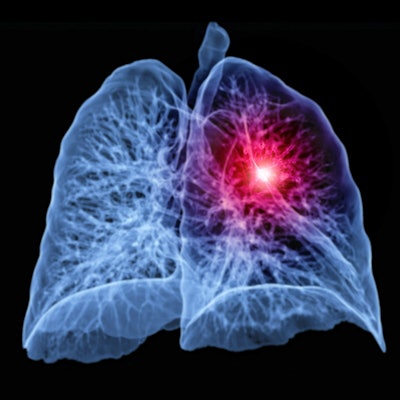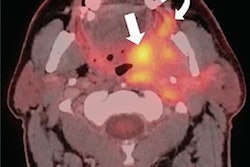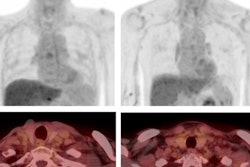
Survivors of head and neck cancer have a 2.5 times higher risk of developing secondary cancer in the lungs compared to people who have not had the disease. But screening with low-dose CT is effective at catching these cancers early, according to a study published in JAMA Otolaryngology-Head & Neck Surgery.
The findings could translate to better patient outcomes, wrote a team led by Dr. John Cramer of Wayne State University in Detroit, MI.
"In head and neck cancer survivors, lung cancer screening may aid in detecting a second primary lung cancer or metastatic head and neck cancer earlier ... which may improve treatment outcomes," the group wrote.
Patients who beat head and neck cancer are considered high risk for cancer in the lungs, since up to 80% of head and neck disease is associated with smoking, the team noted. Although the U.S. Preventive Services Task Force (USPSTF) released updated guidance in March that expanded the number of people who are eligible for CT lung cancer screening, the group did not specifically include recommendations for head and neck cancer survivors.
Cramer's group investigated the effects of lung cancer screening in this population, comparing both incidence of lung cancer in head and neck cancer survivors compared with those who had not had the disease and the performance of low-dose CT versus chest x-ray for identifying malignancy.
Using data from the National Lung Screening Trial between August 2002 and April 2004, the researchers identified 171 head and neck cancer survivors between the ages of 55 and 74 who had at least a 30 pack-year history of cigarette smoking and who were current smokers or had stopped smoking within the past 15 years.
Of these 171 cancer survivors, 82 were subsequently screened with low-dose chest CT and 89 with chest x-ray. Not surprisingly, head and neck cancer survivors had higher rates of lung cancer compared with those who had not had the disease -- 2.5 times higher.
The investigators also discovered that CT found more secondary lung cancers than chest x-rays, at 2,610 cases per 100,000 person years (i.e., the number of people in the study and the time each person spends in the study) compared with 1,594 cases per 100,000 person-years. As well, those screened with low-dose CT had a higher overall survival rate compared to those screened with chest x-ray, at 7.1 years versus 6.7 years.
The study confirms that it's important to boost the adherence of head and neck cancer survivors to lung cancer screening with CT, wrote a group led by Dr. Sean Massa of Missouri's Saint Louis University Hospital in an accompanying commentary.
"Even without changing screening guidelines, clinicians who treat patients with head and neck cancer have tools to reduce patients' risk of lung cancer mortality," Massa and colleagues wrote. "The current study adds urgency to these efforts ... there is likely substantial room for expansion of lung cancer screening in the head and neck cancer population considering the very low rate of lung cancer screening in the general population."



















